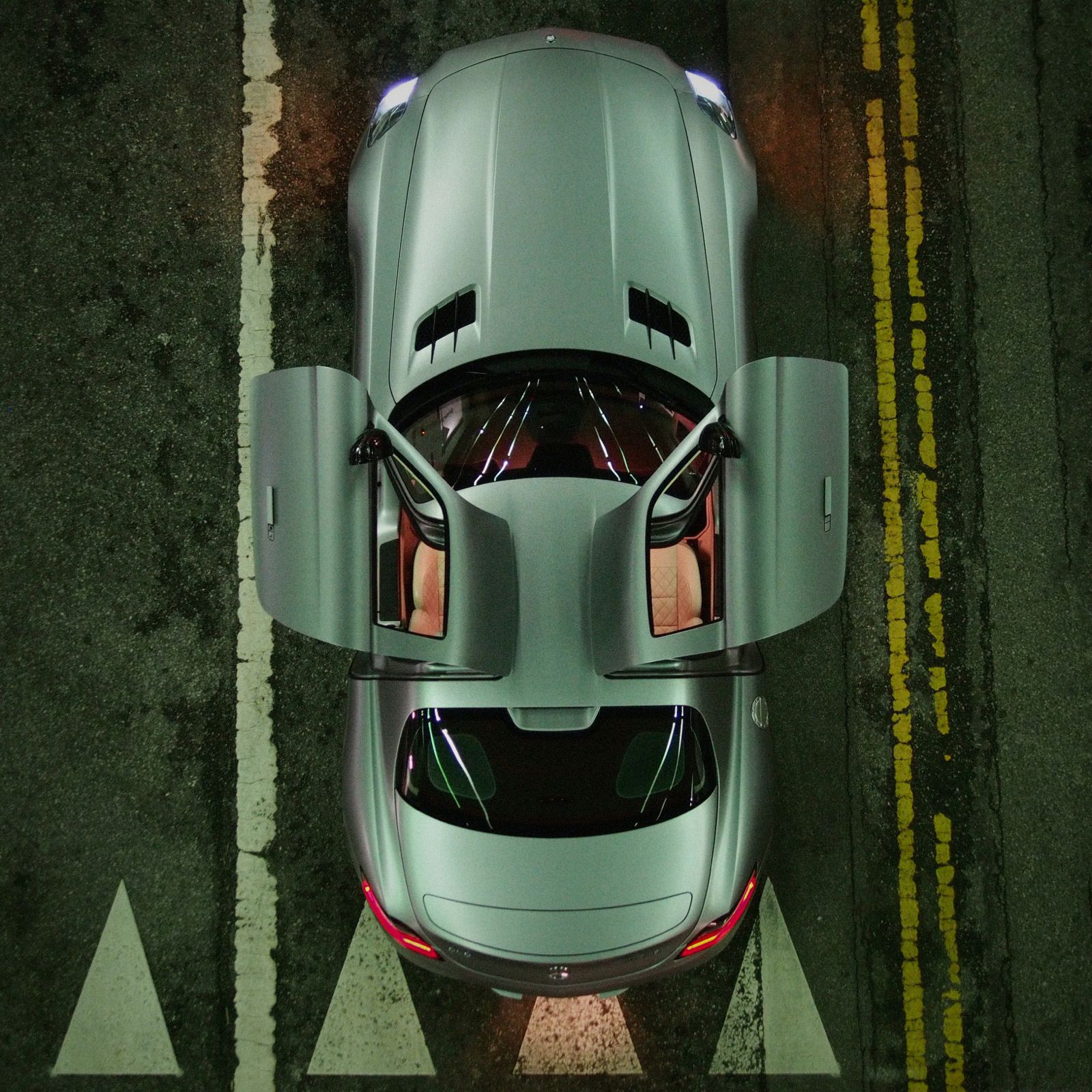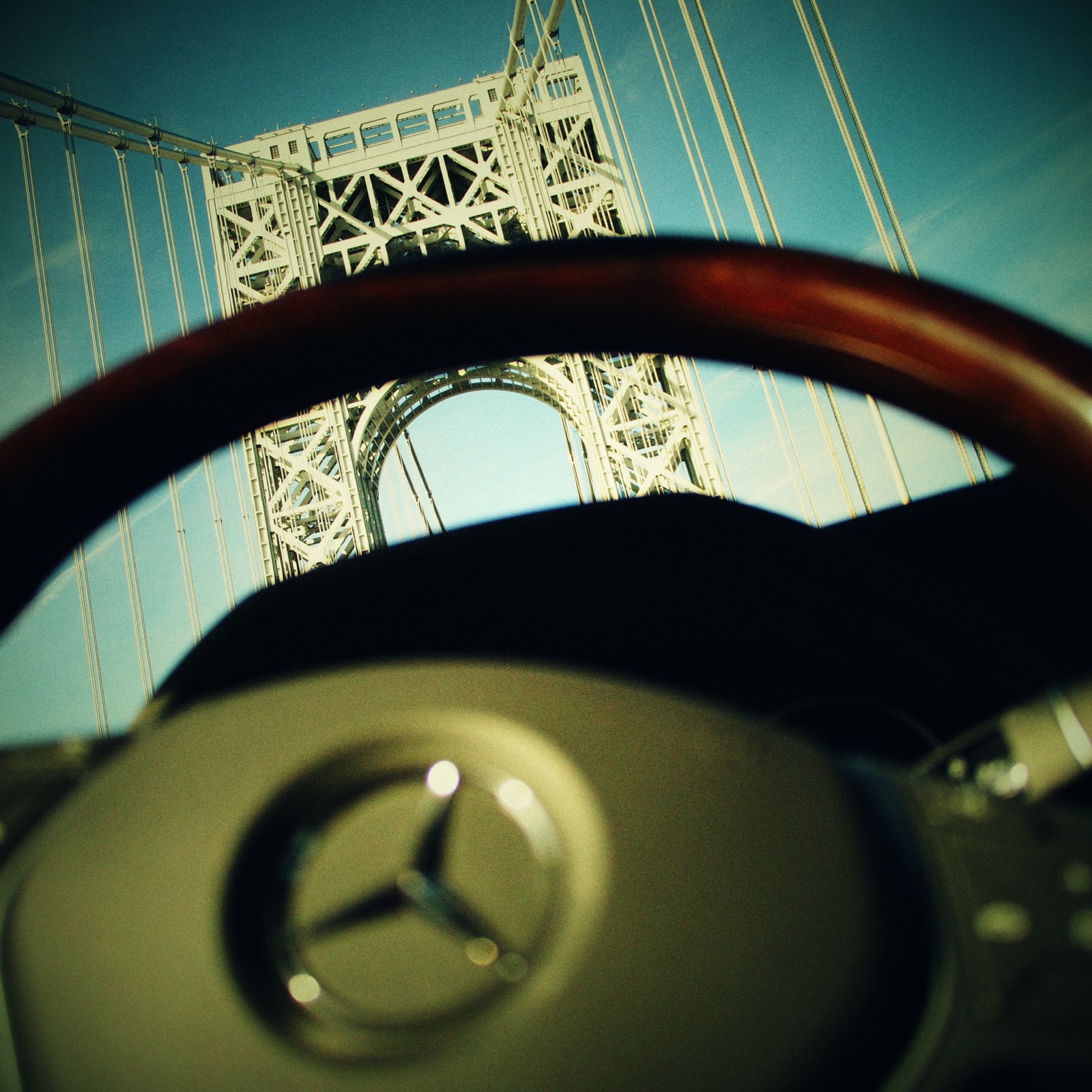The video you’re about to watch was originally broadcast live in February of 2017. It’s the story of how I transitioned from shooting full frame, to shooting Micro Four Thirds. Now, because it was a live broadcast, it was of course a bit long and rambling, and while it may have been the most popular video on my channel for quite some time, there are, understandably, quite a few comments asking me to “get to the point”. So I’ve decided to re-edit and re-release this video, but just the good parts, so I can get to the point.
Now, be sure to stick around to the end of the video, where I’ll provide an update of where things are today. Now, this is a really good story because this is the story of how I switched to Micro Four Thirds for essentially all of my work. So, my first Micro Four Thirds camera was an Olympus. A friend of mine who is a bit of a camera collector had mailed me — shipped me a bunch of cameras to play with. (It's good to have friends like this.)
There was a Leica S3, the big medium format, Leica DSLR-shaped camera, there's was a Fuji, I've no idea what model number in the bag, and there was an Olympus OM-D 1 or 5 or whatever was the current model at that time. So, I'm playing with the Leica and the Fuji and my buddy calls me and says “Hey, have you played with the Olympus yet?” and I said “No, no, I'm probably not going to”, he says “Why not?” “Well, yeah, I'm a full frame snob, you know? And, you know, I like big sensors”. He goes “Try it. Dude, you’ve got to work with it”.”Fine. Alright, you shipped it to me, I may as well try it out”.
So, I tried it out. And I remember specifically one night at home doing some photos with really low light and I’m looking at the picture going “well, it actually focused, like, instantly which my Canon wouldn't do in that kind of light”, and the shot was great. “Now this is… kinda cool”.
Alright, so I'm gonna give this a bit more of a try. So I played with it more and more and more and I fell in love with the format. So I bought my own, bought a body and a couple lenses and… I know I shot an event, an anniversary party or something like this.
And so I thought, you know, I'm gonna shoot with that instead of the big Canon because nice, small, lightweight, unobtrusive and one of the things I really liked was the articulating LCD, and the OMD had one that flipped out. And that was really cool; go waist-level, get over your head, that kind of thing.
Certainly the 16 Megapixel size was not a problem, you know, they're gonna do books out of this and do social media stuff so, you know, the resolution is definitely not a problem.
So I thought, “You know, this is an okay one to try it out with”, so I did that. I said okay, I'm gonna do a “commercial shoot”, a very low-budget, local clothing store, “hey can you do some pictures for us?” and you know, whenever it is the low budget and you agree to do it, your objective is to get this in and out the door as quickly as possible.
So, I thought okay, here's what I'll do, I'm gonna shoot the pictures with the Olympus, I will then Wi-Fi those over to my iPhone or iPad, I don't remember at the time what it was and I'm gonna process them in Snapseed or something like that, give them a vintage look, because it's a vintage clothing store, so let's do some vintage photos and deliver them from the car, right? Before I even drive away.
This is a commercial test. Vintage clothing store, just simple little photos of their clothing, shot these, walked out, sat down on my car, imported and off I went. So this is very Instagrammy, you know, processed kind of look to it. And that's fine, this is what they wanted.
Okay, so that worked out really well, right? So, then came the real test… a proper commercial job for these guys. A friend of mine who does a lot of work for Mercedes called me and said “Hey, we're doing this social media project in the United States. We're gonna be shooting in New York and in L.A. Basically, Mercedes is delivering us a bunch of cars in each city, we're gonna take these cars, drive them around, take cool pictures of them, post them on their social media account”.
And you’re thinking, “I'm gonna get paid for this? Cool”. It sounds like fun, right? It's the kind of thing you’d do anyway. So, I'm thinking, “this is the perfect real commercial test for this camera”. One of the first things I did was I set the camera to shoot square.
I'm always shooting RAW plus JPEG on these because I want to get that JPEG that's easy to transfer and you know, now you can transfer the photo, RAW photo and actually edit the RAW file, but back then you absolutely couldn't do that on your iOS device; had to be the JPEG.
So, shooting RAW plus JPEG, get that JPEG into the camera via Wi-Fi and I was shooting square so that — we knew we're going to Instagram square. This is before Instagram did non-square. So, I could see on the LCD preview on the camera the square image, so I knew exactly how it was gonna be cropped.
So there was no shoot wide and you know, thinking you're gonna crop square and then you gonna crop and go “oh god! I should have - oh, didn't - I can't quite get it”. No, I'm just shooting square, so, yeah that was cool. I could dial in a look in the camera, so I dialed a little bit of a look but for the most part I wanted to be able to do the processing in you know, God knows what tools at the time, Snapseed and whatever other tools I had.
Obviously we're posting to Instagram here, it's not like we're doing big huge billboards, so resolution clearly not an issue. This became an issue of convenience; being able to transfer the photos and do that you know, right away in the field, to be able to shoot square, get that square aspect ratio while I was shooting and just the general lightweight ease of use of using the cameras.
But this photo in particular was one that really kind of did it for me. So here, let me go ahead and pull this picture up. We had a local contact in LA and I'm asking - he is you know, in the film industry, he shoots all the time in LA and I said “Hey, is there a spot where I can shoot this car top down? Where I can get above it and shoot straight down?” he goes “Yes, I know the spot”.
So all right, we go out there and we're doing this in the middle of the night, so there's no traffic. So, a guy pulls in the car underneath for me and I go up on top. Now, I've got this… imagine that my desk is a wall, obviously a wall so you don't fall in the hole. And so, I'm thinking I can just lean over the wall.
Well, unfortunately it wasn't quite that easy because there's the big wall but then there was a platform beyond that before the hole. So basically, if someone dropped something or stepped over the wall or whatever, they wouldn't just go straight down, there was another gap.
So, now I’ve gotta climb over this wall and stand on this platform [Chuckles] to get this shot. But I can’t… I can go up to the edges shoot down, but the thing is really, really thick. So, now imagine you're standing on this wall, super thick concrete that you're standing on, so if you put your camera at the edge of that, what's gonna be in the shot? You’re gonna have this huge wall looking down.
So, I gotta get the camera way out. Well, I didn't have a pole or anything to hold it out there, so all I can do is hold a camera out like this. So I remember; flip up that LCD again… nobody else's camera back then had the flip-up LCD. I know this is a lot more common now but nobody else on the shoot had one of these.
Flip up that LCD, I'm holding the camera out as far as I can. I've got a backpack on that's attached, cinched, and I've got guys behind me holding on to my backpack to hold me so I don't fall down the hole [Laughter]. Insane.
So, I'm doing this, I'm holding the camera out and leaning out, leaning in and leaning out and I'm able to because I can see the LCD, I can see the picture. I'm able to adjust the angle of the camera and — I don't remember if on radio or phone, probably on a phone call to the driver — I say okay, pull the car a little bit forward, backward, turn it, whatever, and get the shot set up exactly the way that I want it.
On this one, I mounted the camera onto the front of this Mercedes and drove all over doing slow shutter speed stuff. I had this suction mount that I bought specifically for this. Suctioned this thing on to the car and then mount my very lightweight Micro Four Thirds camera onto that.
You know, you see these suction mounts that have three suctions on them and you can put big old camera rigs. I'm just using a little one. The camera is well under the weight limit of this thing; suction mount this thing under the hood of the car and you're driving around a $150,000 brand new Mercedes in the streets of New York with a camera suction-cupped onto the hood of the car, you kind of don't want the camera to fall off; that'd be bad. But I had absolute total confidence in this rig.
I had it set up on a wired trigger and I was just driving around and just pushing the button over and over again, then I stop, look at the pictures, adjust the shutter speed trying to get that exact, you know, get the right shutter speed so I could get this shot. And this is exactly what I wanted. I wanted this view where you got the star that's sharp and then the blurry road behind it. And then you know, the yellow taxis for New York were kind of a requirement, so I managed to get those in there.
That's the kind of thing that I did with my first commercial shoot, first real commercial shoot with the Micro Four Thirds and it has been uphill ever since.
So, where does that bring us today? Well, I’m still shooting Micro Four Thirds. In fact, most of the videos you see on this channel — including this one here – are being shot on LUMIX Micro Four Thirds cameras. I am still a Panasonic LUMIX Ambassador, which means I’m also shooting with the LUMIX S-Series, like the LUMIX S1H, which are full frame. So I’ve kind-of come full circle! I’m shooting both Micro Four Thirds, and full frame. But the Micro Four Thirds story… is far from over. Be sure to subscribe to this channel, so you see what happens next.



Comments from YouTube